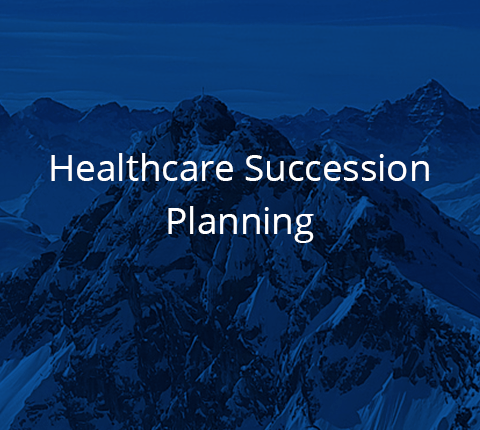Healthcare Succession Planning
Today’s aging population will have a significant effect on the healthcare industry in two major ways. First, as people age, their need for healthcare services increases. According to the U.S. Centers for Disease Control, the 65+ year old demographic goes to the hospital three times more than the general population. When that demographic ages by ten years, visits increase by four. The impact is two-fold, it is not only patients that are aging. Hospital staff – doctors, nurses, and clinicians are aging too. As they retire, they leave vacancies which can have significant effects on hospitals and healthcare organizations. How much impact? In early 2017, around 60,000 new healthcare jobs were added in the USA and aging was one of the biggest factors behind this growth. As such, it is imperative to be prepared to take on the task of healthcare succession planning, especially for turnover in C-suite level positions.
Healthcare Succession Planning

Succession planning must be made a priority for healthcare organizations in order to ensure smooth transitions. As CEOs, CFOs and other C-suite healthcare executives leave the workforce, those in charge of hiring must be prepared to find and assess talent, onboard those who take over positions or to work with a healthcare executive search firm or recruiter who is well versed in placing talent that will become an asset to the organization. Having a succession plan is vital to the longevity and viability of your organization.
Why Focus on Succession Planning
Succession planning in healthcare is about more than filling vacancies. When working on succession planning, you will be able to identify people within your organization who have strengths to become leaders in case of an unexpected resignation. It can also alert you to areas and team members that can benefit from additional training and resources.
Succession planning is a strong aspect of risk management. Postponing succession planning can put healthcare organizations in a difficult position if and when a higher tier leader departs from the organization.
How to Prepare a Healthcare Succession Plan
First, you must assess which leaders may be leaving the organization. Then, it is imperative to look at their skills, qualifications, and the tasks they perform. Once these tasks are completed, a position specification must be created which includes responsibilities and the skills and abilities the future leader must possess.
Ideally, when you are working on the succession plan, one should involve the person who holds the position to be filled. They can give important insights that will help shape the candidate profile.
A plan must be put in place to decide if the candidates will come from within the organization, or if an outside candidate will be able to bring more benefits to the organization. If it is to be an external candidate, you must decide if the search will be conducted internally, or if you will engage an executive search firm or healthcare recruiter to perform the search.
It is also important to begin to consider financials, compensations, and benefits for both the outgoing and incoming talent in order for the plan to work.
● Identify essential leadership roles
● Conduct leadership assessments to vet competencies, skills, and certifications
● Implement mentoring programs and career development strategies
● Monitor the success of said strategies and programs
● Conduct bi-yearly succession planning meetings and adjust plans as needed
● Discuss succession planning with executive search firms
Taking these steps will allow your organization to identify and develop those who will be stepping into vacant leadership roles. It is important to note that not all healthcare organizations will have the resources to put these plans in place. As such, it is important to keep lines of communication open with outside firms who will be able to step in when a c-suite vacancy comes up and needs to be filled quickly and effectively. The idea, regardless of your organization’s situation, is to make sure you have a plan in place to avoid costly hiring mistakes and increase retention rates.
When a C-suite leader steps down without warning, your organization can be put at risk, especially now when the healthcare industry is undergoing constant change by way of healthcare reform and legislation. However, these times of transition can be handled with ease.
Engaging an executive search firm to assist with succession can be a strong strategy for your healthcare organization. Executive search firms work to create smooth transitions and can often reduce the costs of the search and hiring process. Working with an executive search firm or healthcare recruiter opens up your healthcare system or hospital to new opportunities and a larger talent base.
For example, here at Summit Talent Group, we understand the importance of making sure the talent that is placed is not merely qualified for the position, but that they are a right cultural fit for your organization. It takes more than looking good on paper to be able to affect positive change in healthcare. New leaders must fit well into will the new leaders fit into the existing culture and must be able to work well with the existing leadership team.
If succession planning is being executed for an entire new c-level or executive management team, it is vital to ensure that the incoming leaders work well not with the old leaders (who sometimes move on to Board positions) but also that their skills balance and augment other new leaders’ skills.
If you are looking to start succession planning at your hospital or healthcare organization and would like to learn more about how the team at Summit Talent Group can assist you with your needs, contact us. Our boutique team of leaders has in-depth experience in the healthcare industry. We understand your challenges and needs and are ready to build a long-term relationship with your team. We look forward to speaking with you.

Business Manager, Summit Talent Group

